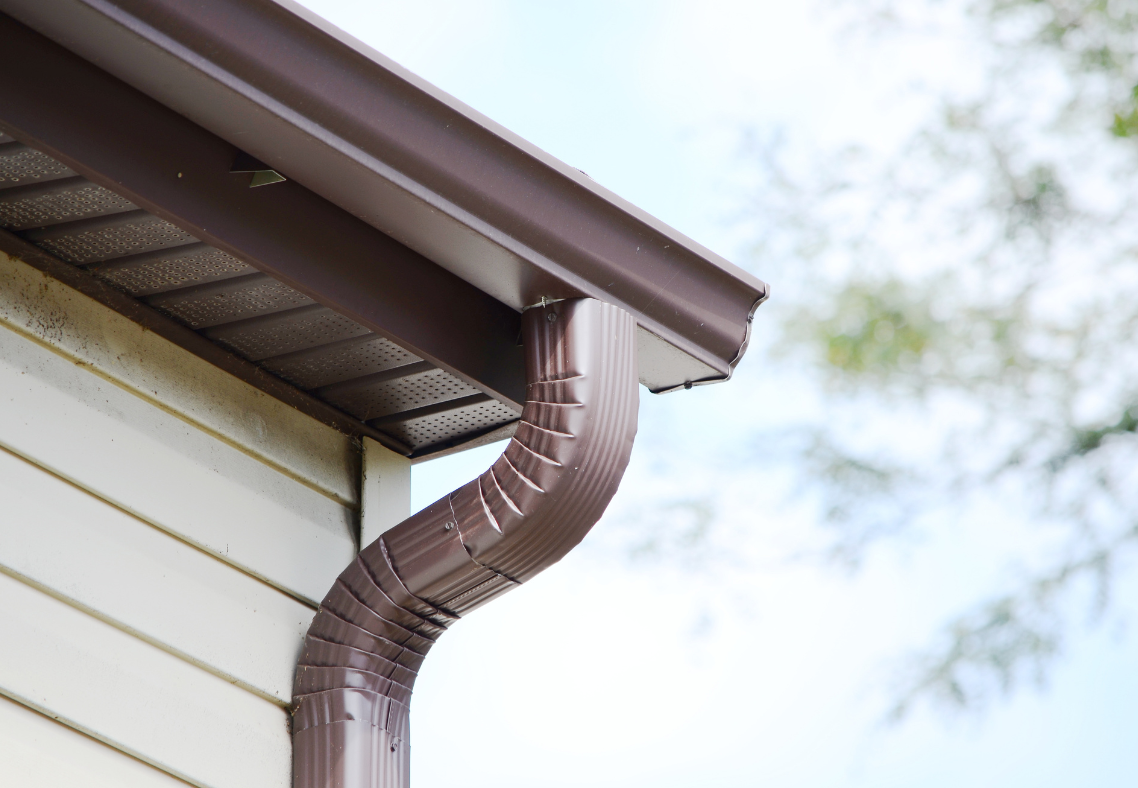How To Determine How Many Downspouts A Roof Needs
Roof Right: Exterior Home Remodeling Specialists in Maryland Contact UsSchedule A Free EstimateProperly sizing and placing downspouts is crucial for protecting your Maryland home from water damage. Downspouts work in tandem with gutters to channel rainwater away from your roof and foundation, preventing issues like basement flooding, soil erosion, and structural deterioration. In regions like Maryland, where seasonal storms and heavy rainfall are common, ensuring your gutter system is equipped with the right number of downspouts is essential.
Answering The Question: How To Determine How Many Downspouts A Roof Needs?
Why Downspout Quantity Matters
An inadequate number of downspouts can lead to gutter overflows, water pooling near your home’s foundation, and long-term structural issues. Conversely, too many downspouts can disrupt the aesthetic appeal of your home’s exterior and may not be cost-effective. Striking the right balance ensures efficient water drainage and maintains your home’s visual integrity.
Key Factors in Determining Downspout Requirements
- Roof Area: The size of your roof directly influences the volume of rainwater your gutter system must handle. Larger roofs collect more water, necessitating additional downspouts to manage the increased flow.
- Roof Pitch: Steeper roofs accelerate water runoff, increasing the demand on your gutter system. A higher pitch may require larger gutters and additional downspouts to accommodate the rapid water flow.
- Rainfall Intensity: Maryland experiences varying rainfall patterns, with some areas prone to heavy downpours. Understanding local rainfall intensity helps in designing a gutter system capable of handling peak water volumes.
- Gutter and Downspout Sizes: Standard residential gutters are typically 5 or 6 inches wide, paired with downspouts measuring 2×3 inches or 3×4 inches. Larger gutters and downspouts can handle more water, potentially reducing the number of downspouts needed.
General Guidelines for Downspout Placement
While specific requirements may vary based on individual home designs, the following general rules can serve as a starting point:
- One downspout per 600–1,200 square feet of roof area: This range depends on downspout size and local rainfall intensity.
- Downspouts every 20–30 feet of gutter length: This spacing helps prevent water accumulation and ensures efficient drainage.
- At least one downspout per gutter run: Each section of gutter should have its own downspout to manage water flow effectively.
Calculating Downspout Needs: A Step-by-Step Approach
- Measure Your Roof Area: Calculate the square footage of your roof. For complex roof designs, break down the area into manageable sections.
- Adjust for Roof Pitch: Steeper roofs collect more water. Apply a pitch factor to your roof area to account for this. For example, a 6:12 pitch has a factor of 1.1.
- Determine Rainfall Intensity: Consult local weather data to find the maximum rainfall intensity in your area, typically measured in inches per hour.
- Calculate Adjusted Roof Area: Multiply your roof area by the pitch factor and rainfall intensity to find the adjusted area.
- Determine Downspout Capacity: Based on your gutter and downspout sizes, determine how much area each downspout can handle.
- Calculate Number of Downspouts: Divide the adjusted roof area by the capacity per downspout to find the total number needed. Always round up to ensure adequate drainage.
Example Calculation
Let’s consider a Maryland home with a 2,000-square-foot roof and a 6:12 pitch (pitch factor of 1.1).
- Adjusted Roof Area: 2,000 sq ft × 1.1 = 2,200 sq ft
- Rainfall Intensity: Assuming a local intensity of 6 inches per hour
- Total Adjusted Area: 2,200 sq ft × 6 = 13,200
- Downspout Capacity: Using 3×4-inch downspouts, each handling 1,200 sq ft
- Number of Downspouts: 13,200 ÷ 1,200 = 11
In this scenario, the home would require at least 11 downspouts to manage the water effectively.
Additional Considerations
- Gutter Slope: Ensure gutters are properly sloped toward downspouts to facilitate water flow.
- Downspout Placement: Position downspouts at corners and low points of the roof to maximize efficiency.
- Aesthetics: While functionality is paramount, consider the visual impact of downspouts on your home’s exterior.
- Maintenance: Regularly inspect and clean gutters and downspouts to prevent clogs and ensure optimal performance.
Contact Roof Right for Downspout Installations in Maryland
Determining the appropriate number and placement of downspouts is vital for protecting your Maryland home from water damage. At Roof Right, located in Hampstead, MD, we specialize in designing and installing efficient gutter and downspout systems tailored to your home’s specific needs. Our experienced team understands the unique weather patterns and architectural styles prevalent in Maryland, ensuring your gutter system is both functional and aesthetically pleasing. Don’t leave your home’s protection to chance—reach out to Roof Right for a comprehensive assessment and professional installation services.
Areas We Serve
If you're looking for a roof contractor in Maryland, give Roof Right a call today at (410)-374-5923 to schedule an appointment!
Carroll County
Howard County
Clarksville, Columbia, Elkridge, Ellicott City, Fulton, Jessup, Laurel, Woodstock
Montgomery County
Baltimore County
Baldwin, Bradshaw, Carney, Cockeysville, Glen Arm, Hunt Valley, Jacksonville, Kingsville, Lutherville, Nottingham, Overlea, Owings Mills, Parkton, Parkville, Perry Hall, Phoenix, Pikesville, Reisterstown, Sparks, Timonium, Towson, White Marsh

